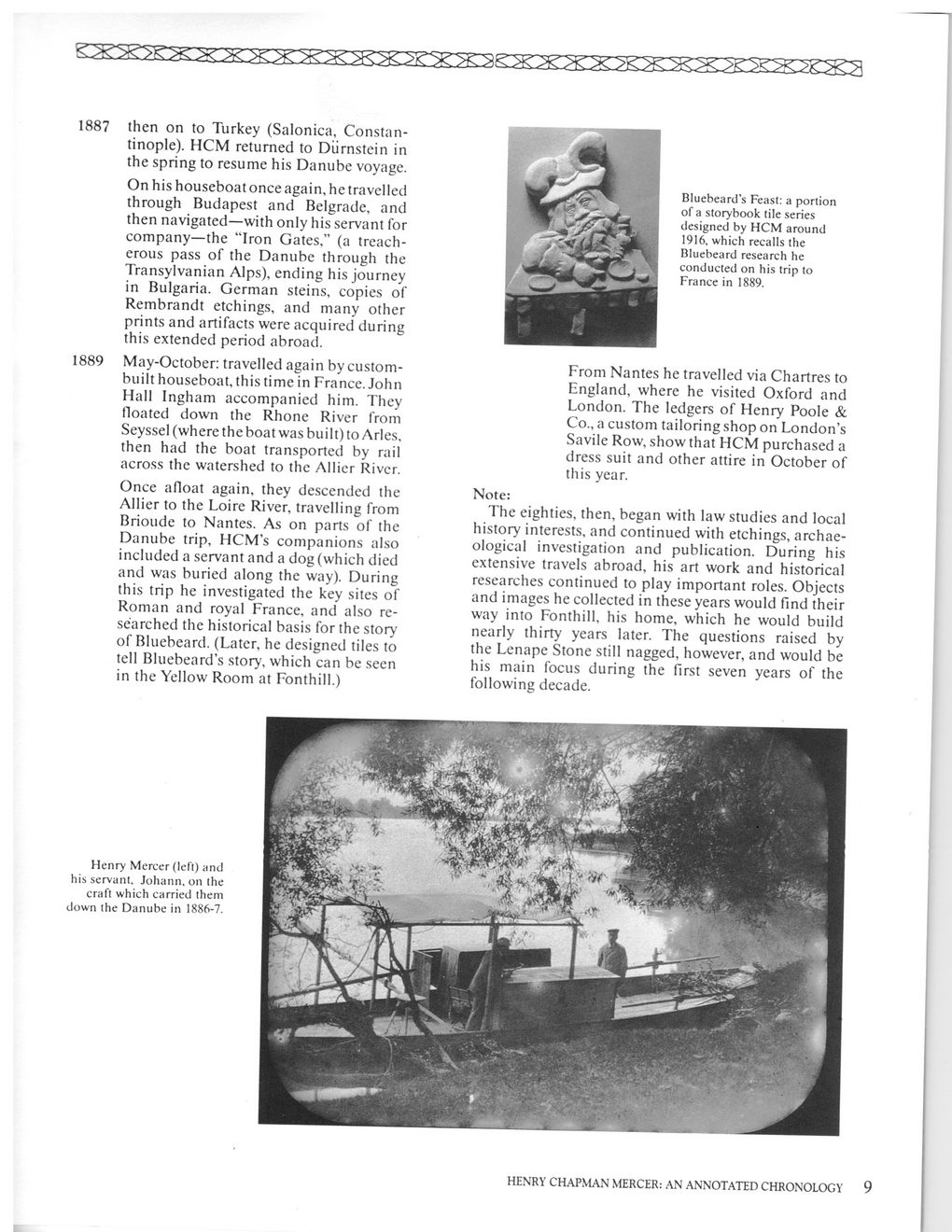This text was obtained via automated optical character recognition.
It has not been edited and may therefore contain several errors.
1887 then on to Turkey (Salonica, Constantinople). HCM returned to Diirnstein in the spring to resume his Danube voyage. On his houseboat once again, he travelled through Budapest and Belgrade, and then navigated—with only his servant for company—the “Iron Gates,” (a treacherous pass of the Danube through the Transylvanian Alps), ending his journey in Bulgaria. German steins, copies of Rembrandt etchings, and many other prints and artifacts were acquired during this extended period abroad. 1889 May-October: travelled again by custom-built houseboat, this time in France. John Hall Ingham accompanied him. They floated down the Rhone River from Seyssel (where the boat was built) to Arles, then had the boat transported by rail across the watershed to the Allier River. Once afloat again, they descended the Allier to the Loire River, travelling from Brioude to Nantes. As on parts of the Danube trip, HCM’s companions also included a servant and a dog (which died and was buried along the way). During this trip he investigated the key sites of Roman and royal France, and also researched the historical basis for the story of Bluebeard. (Later, he designed tiles to tell Bluebeard’s story, which can be seen in the Yellow Room at Fonthill.) Bluebeard’s Feast: a portion of a storybook tile series designed by HCM around 1916, which recalls the Bluebeard research he conducted on his trip to France in 1889. From Nantes he travelled via Chartres to England, where he visited Oxford and London. The ledgers of Henry Poole & Co., a custom tailoring shop on London’s Savile Row, show that HCM purchased a dress suit and other attire in October of this year. Note: The eighties, then, began with law studies and local history interests, and continued with etchings, archaeological investigation and publication. During his extensive travels abroad, his art work and historical researches continued to play important roles. Objects and images he collected in these years would find their way into Fonthill, his home, which he would build nearly thirty years later. The questions raised by the Lenape Stone still nagged, however, and would be his main focus during the first seven years of the following decade. Henry Mercer (left) and his servant. Johann, on the craft which carried them down the Danube in 1886-7. HENRY CHAPMAN MERCER: AN ANNOTATED CHRONOLOGY

Bucks-Mont, Pennsylvania Bucks County Hist Soc - Henry Chapman Mercer (11)